Chrysanthemum Anastasia (Anastasia)
A wide range of hybrid chrysanthemums today gives people the opportunity to replenish their collection of ornamental plants with new masterpieces. Your attention, as flower growers, should be awarded to the Anastasia variety. It stands out among others for its impressive size and original shape of the inflorescences.
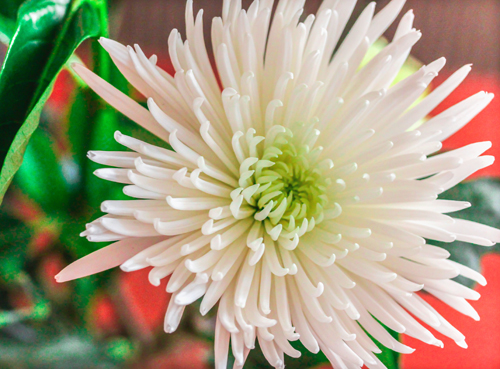
History of appearance
An amazing culture with a noble name became known to flower lovers in the first year of the new millennium. She won the hearts of both classics supporters and fans of the know-how in the field of flower breeding. Anastasia enjoys particular sympathy in our country, since she was named in honor of the youngest daughter of the last Russian emperor Nicholas II - who died at the hands of the Bolsheviks along with the entire royal family of Grand Duchess Anastasia. This variety is a new variation of the famous Delistar chrysanthemum from the Spider group.
Description of appearance
The plant belongs to the category of single-headed large-flowered varieties. Its attractiveness for gardeners is due to the presence of fluffy flowers that resemble a star thanks to the long reed petals. A double inflorescence can be from 18 to 22 cm in diameter. It is crowned with an erect stem, distinguished by its elasticity and strength. The culture grows to a height of 80 cm. In addition to lovely flowers, the hybrid is decorated with large, pinnately separated leaves with a dense texture, a smooth surface, having an emerald green hue.
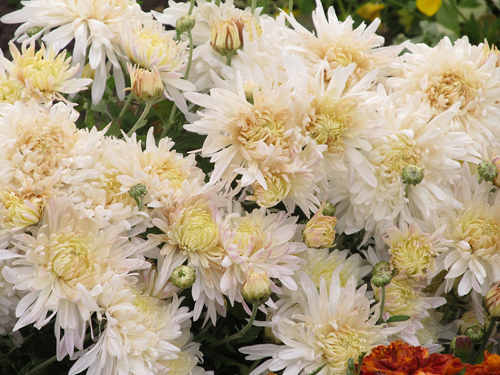
A feature of this variety of chrysanthemum is that the color and structure of its inflorescences directly depends on the specific subspecies, and there are many of them.
- Anastasia is white. The petals of its flowers are snow-white or may have a slightly pinkish tint, in the middle they are shorter, colored in the half-release phase in a cream color with a yellowish tint.
- A. yellow. The plant is decorated with star-shaped inflorescences formed by long needle-shaped petals of a bright sunny shade. The minimum size of the central petals allows them to cover the center of the flower basket. The culture blooms in September.
- A. green. The appearance of the inflorescences of this plant, due to the upward curved tips of the petals, is associated with spider-like varieties of chrysanthemums. It is a very hardy variety with light green flowers.
- A. pink. This subspecies is characterized by the presence of a double inflorescence of intense or, on the contrary, pale pink color. The degree of splendor of magnificent flowers is medium. In the middle, the petals are shorter, grow vertically upward and thus close the center of the flower.
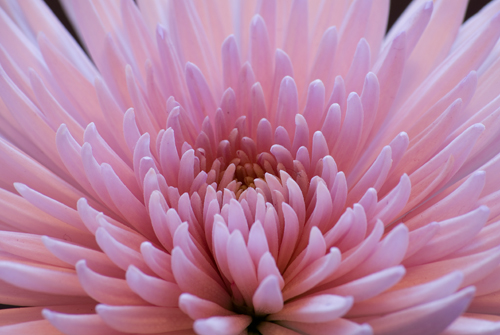
- A. bronze. In terms of splendor, the flowers of this Anastasia are similar to the inflorescences of the previous variety. The central part of the light bronze flower basket is also covered with shortened petals. It is noteworthy that their shade is darker than the color of the entire flower as a whole.
- A. start white. This culture is distinguished from other subspecies of our heroine by the boiling white color of long petals, the greenish tips of which, in combination with the middle of the same tone, give the chrysanthemum a unique charm.
- A. lilak. The hybrid is admired for the intense pink shade of incredibly lush flowers that appear on the plant in October.
- A. Cream. As the name suggests, the inflorescences of this subspecies are soft cream. The middle of the luxurious flowers has a muted yellow color and is formed by short, curved petals.
Agrotechnical features
Autumn beauty Anastasia loves light and does not bloom at all in the shade. However, it should be protected from direct sunlight so that burns do not appear on the petals. It is better to place the chrysanthemum where strong winds will not harm it.
Planting is carried out in ordinary garden soil, to which humus and peat are added. A layer of expanded clay mixed with sand is placed at the bottom of the hole to prevent moisture stagnation in the soil under the flower. Water the plant in moderation. Weeding, mulching and feeding should be regular. For the winter, the bush is covered with fallen leaves, after cutting it off and spilling it with peat.
Use cases
An ornamental culture with the aristocratic name Anastasia will adorn single plantings and flower beds, where it can coexist with other chrysanthemums or other perennials. Plants of this variety are also used to decorate paths. Anastasia's flowers are also good in cutting, because they stand in a vase, without losing freshness, for up to three weeks.

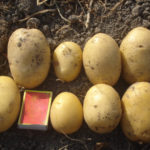
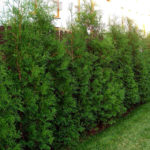

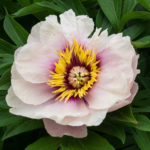
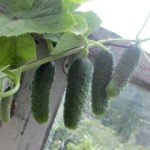



My Anastasia is pink. Although, to be honest, until today I did not know the name of the variety. I have had it for many years. It is very unpretentious - I would even say that it requires almost no maintenance. For the winter - I do not cover with anything except soil. In the spring, when the first shoots appear, I pluck them and plant them directly in the ground near the mother bush. Thus - every year I get young bushes that develop well. They are easy to form, and the blossoming flowers are very bright, large, even though there are simply a huge number of them. But, of course, for this they need to be watered - I noticed this after a rather rainy summer, when my chrysanthemum bloomed especially gorgeous.
If we talk about the flowering period, then I would attribute it to the average. But it blooms for a very long time. Since I learned from the publication that Anastasia comes in different colors, now I will look for them for my flower garden.